What is the best paint for heating pipes: safe, durable and beautiful?
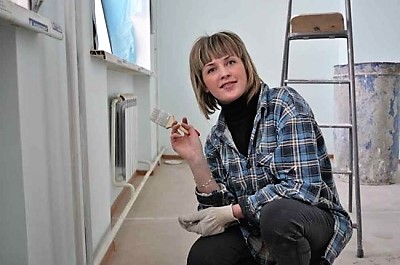
Long gone are the days when paint was used to paint radiators, heating pipes, and other metal surfaces with high temperatures. silverware of my own making.
The construction market offers us wide choice heat-resistant paints that provide corrosion protection with prolonged exposure to high temperatures and attractive appearance heating systems.
Content
Requirements for paint for heating pipes
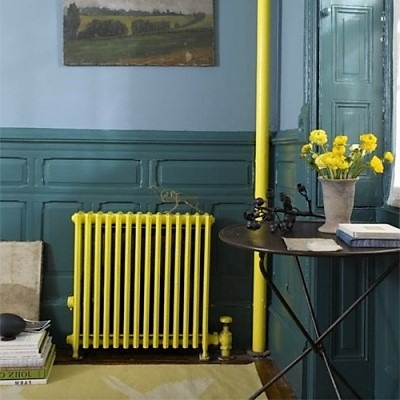
Basic requirements, which apply to paints and enamels for heating systems:
- resistance to high temperatures and temperature changes;
- ability to withstand high blood pressure;
- wear resistance and durability;
- resistance to corrosion;
- elasticity - long-term preservation of appearance;
- hiding power — low paint consumption per unit of measurement;
- good adhesion to metal;
- eco-friendliness, harmlessness.
Sometimes additional requirements are imposed on the compositions: resistance to aggressive chemical compounds, moisture resistance.
A paint that has these qualities, will be able to provide:
- long-term protection of metal from corrosion at constant high temperatures;
- overheating protection;
- aesthetic appearance.
Important! For home use, paints, varnishes, and enamels that can withstand temperatures are used. from 80 °C to 120–200 °C for a long time.
How can you paint the pipes in an apartment?
Exists several types paint suitable for pipes. When choosing, you should consider all the pros and cons.
Acrylic enamels
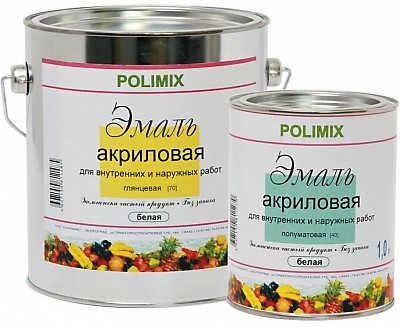
Compositions based on acrylic resins withstand heat up to 100-120 °CThey are durable, form an elastic coating that is not prone to cracking.
Water based acrylic paints have no unpleasant odor and are safe for human health.
They are great for painting radiators and heating pipes, but will not provide protection for the metal at higher temperatures, and therefore not suitable for painting stoves, fireplaces, barbecues.
Alkyd enamels
Alkyd enamels retain their properties when heated up to 100-150 °C, the most famous of this group are classic pentaphthalic enamels PF-115, 156, 133 for painting metal. General property of alkyd enamels — insufficiently elastic coating, prone to cracking due to temperature changes, a sharp chemical smell when painting, drying time coatings and unpleasant odor at high operating temperatures.
Water-dispersible
Water-based paints are safe, do not have a strong smell, dry quickly, but have more low thermal insulation qualities - can withstand up to 80 °C, which is quite enough for painting heating pipes. The coating is obtained resistant to abrasion and yellowing. The paint is easy to apply, the surface can be washed with any detergents, including abrasive ones.
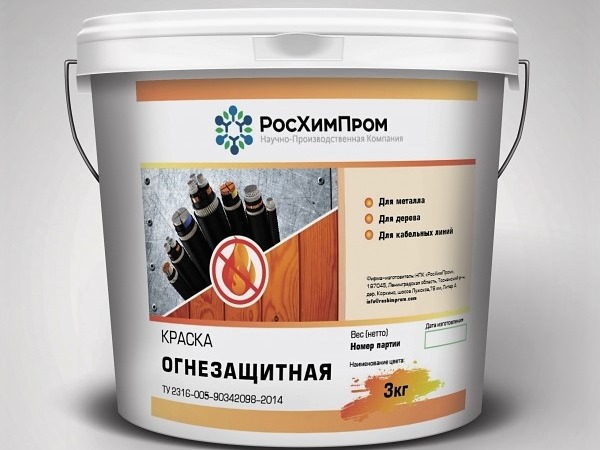
Photo 1. Water-dispersion paint "PIN-fire protection", suitable for metal, 3 kg, from the manufacturer RosKhimProm.
Paint compositions from well-known foreign manufacturers
There are a large number of heat-resistant paints on sale, imported, of excellent quality and with a long service life. service life of up to 40 yearsWhen choosing paint from a well-known foreign brand, you should keep in mind that its the cost will be several times higher composition with similar properties, but from domestic manufacturers.
Radiator Paint
Enamel from the Netherlands acrylic based dispersion, white with glossy shine withstands heating up to 90 °C, does not have a strong smell, as it contains a minimal amount of solvents.
They apply composition on the switched off radiator in 2 layers. First layer recommended dilute with 5% water or branded with the thinner "Unit Spray". The heating system can be operated in 2 days.
Heizkorperlack
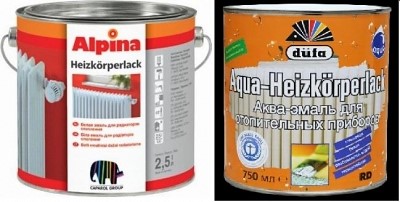
German white glossy alkyd enamel Heizkorperlack is intended for painting heating systems with temperature up to 180 °C. When painting a disabled system, it has good hiding power and forms durable coating.
Enamel is possible dilute with turpentine or white spirit in ratio no more than 5% from volume.
Elementfarg Alkyd
Elementfarg Alkyd greyish-white alkyd paint of Swedish manufacture is intended for painting metal heating systems with temperature up to 100 °C. The paint forms quick drying stable semi-matte film when applied to switched-off devices. It is used as a primer and top coat.
Thermal insulation paint
Thermal insulation paint, or thermal paint - composition for insulation and thermal insulation heated surfaces. The compositions have a long service life: 12-40 years and withstand temperature fluctuations from -70 to +260°C.
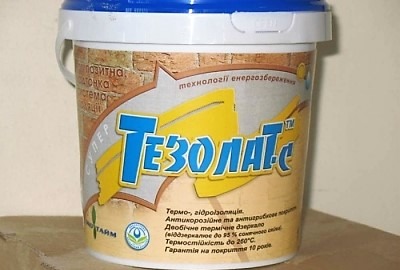
Heat-protective compounds apply:
- For external thermal insulation walls;
- For protection of warm pipes when laying communications above ground;
- For internal thermal insulation surfaces;
- For insulation of vehicles;
- For thermal insulation of industrial and domestic boiler equipment, various pipelines;
- For insulation of various containers.
Thermal paints from different manufacturers contain additives: fiberglass, perlite or vermiculite sand, foam glass in the form of hollow granules, ceramic microspheres, which give the compositions the quality of a heat insulator, capable of replacing traditional insulation materials.
The paint is thick paste of white or gray color. To obtain a uniform layer of it applied with a spray. The cost of thermal paints significantly exceeds the price of thermal insulation compounds; for private households, they are used to protect warm communications from condensation in cold basements and attics, and to paint fireplace chimneys.
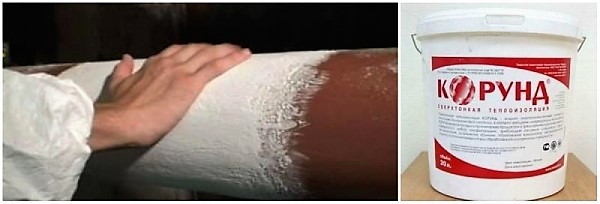
Photo 2. Thermal insulation white paint Korund, applied to a pipe and packaged in a 20 l can.
How to paint: preparing pipes
Before starting work protect from accidental splashes space (floor, wall) around the work area with construction film, cardboard or paper and secure with masking tape. All work is carried out in a respirator, protective glasses, rubber gloves.
Important! The heating system must be cold.
To obtain a high-quality, long-lasting coating, thermal paint is applied on a pre-cleaned and degreased surfaceThe old paint coating is removed mechanically (with sandpaper) or using a special chemical composition.
Cleaned surface dedust: brush off the dust or blow it out with a vacuum cleaner, then wash with water and degrease with gasoline or white spirit. Then the surface is primed. The type of primer is selected based on the recommendation of the manufacturer of the finishing layer. For alkyd pentaphthalic enamels produced in the Russian Federation are used soil GF-0119, some paints can be used for priming in a form diluted with water or solvents.
Description of the process

Paints and enamels for painting heating systems are sold liquid in buckets or in cans for brush work or in aerosol cans for spraying.
For painting external surfaces take a narrow flute, for internal surfaces - a narrow flat brush with a curved handle, which will allow you to paint the most hard-to-reach places of the battery.
Primed metal does not absorb paint, so a small amount of paint is taken on the brush and they shade it carefully. Aerosol balloon before work shake several times, mixing the paint composition. When spraying, it is important to achieve even painting without drips.
Advice. The balloon is being held vertically, at a distance of 30 cm from the surface being painted, move it in a zigzag pattern.
First, paint the back side from top to bottom., then the sides and internal parts, and lastly the visible surfaces. Second layer The paints are applied after the first one has dried.
Useful video
Watch the video to learn what paint won't crack on heating pipes.
Conclusion: the rule of three "no's"
With equal characteristics (heat resistance, durability, etc.) choose for painting pipes a composition with three "no's":
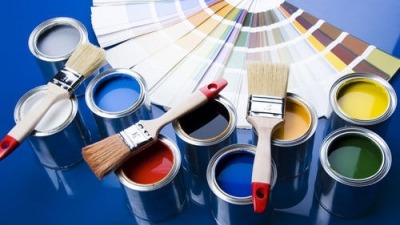
- non-flammable;
- non-emitting during painting and operation;
- having no unpleasant odor.
Do-it-yourself painting with thermal paints it won't be difficultWhen choosing paint, remember the most important thing - the safety of your family.








Comments